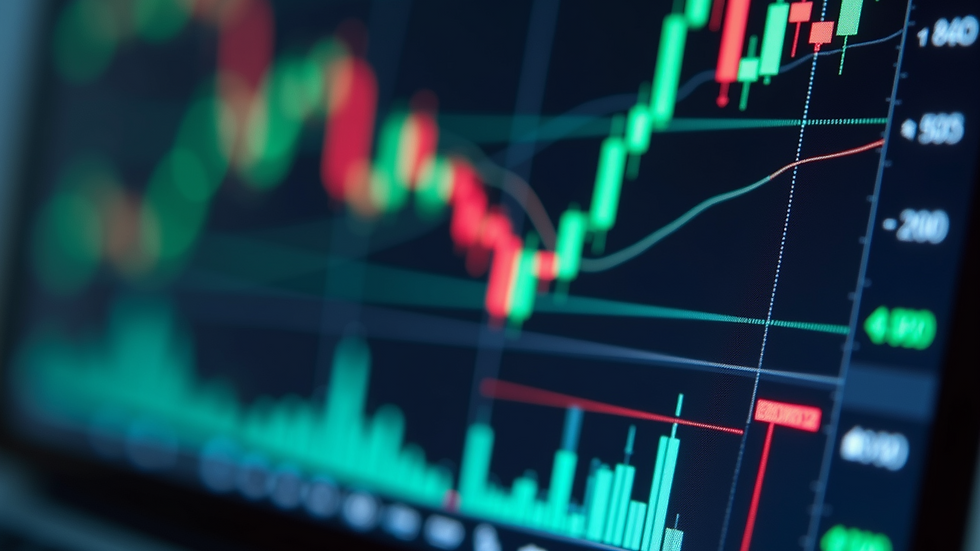Top 7 Trading Strategies for Volatile Markets: Why the Chaos Is Your Advantage
- forex368

- Apr 30
- 3 min read
Volatility Isn’t a Threat – It’s Your Edge
Markets are breaking hard and fast. War headlines. Central bank backflips. Trade tension flare-ups. Political drama in real time. What used to be a controlled risk environment is now a live grenade.
For traders with the right strategy—and the guts to use high leverage—this is the moment.
Forget calm. You want chaos. But you better have a plan.

What’s Driving the Mayhem?
Inflation Waves: Central banks react unpredictably to surprise CPI and wage data.
Rate Confusion: Fed pivots, ECB hesitations, BOJ surprises. No clear roadmap.
Geopolitical Volatility: Middle East, Ukraine, China—headlines move markets hourly.
Algorithmic Whiplash: Algos react in milliseconds. Retail traders chase. Smart traders outthink.
Volatility is the new normal. And that’s your opportunity—if you can execute fast and scale big.
Top 7 Trading Strategies to Dominate Volatile Markets
Each strategy below is designed for high-volatility, high-leverage trading. We break down what they are, why they work, who uses them, and how to manage risk using leverage from 100:1 to 1000:1.
1. Fade the Overreaction
What: Trade against extreme news-driven spikes.
Why: Algos overreact. Price exhausts and retraces hard.
Who: Scalpers, fast execution traders.
Leverage: 200:1 to 1000:1 (tight SL critical).
Best Use: Short bursts, news events, thin liquidity hours.
2. Event Drift Trading
What: Wait for news chaos to settle, then ride the real move.
Why: Institutional money flows in delayed waves.
Who: Swing traders, macro-followers.
Leverage: 100:1 to 300:1.
Best Use: After CPI/NFP/Fed days, global event digestion.
3. Range Break Fade
What: Short false breakouts from tight ranges.
Why: Retail jumps in late; smart traders reverse it.
Who: Day traders, scalpers.
Leverage: 300:1 to 1000:1.
Best Use: Pre-London, NY session overlap, fake moves.
4. Volatility Sniping
What: Enter only after a volatile candle confirms direction.
Why: Removes emotion and guesswork.
Who: Price-action pros, patient scalpers.
Leverage: 200:1 to 500:1.
Best Use: Gold, EUR/USD, JPY pairs post-news.
5. News Calendar Front-Running
What: Enter just before scheduled news in expected direction.
Why: Institutions often position before headlines.
Who: Macro traders, fundamentals-driven swing traders.
Leverage: 100:1 to 300:1.
Best Use: FOMC, ECB, CPI days.
6. Triangulation Trades
What: Trade correlated assets indirectly affected by major moves.
Why: Lower noise, often easier entries.
Who: Risk-averse, correlation-savvy traders.
Leverage: 100:1 to 200:1.
Best Use: Oil-linked FX (CAD/JPY), China-sensitive pairs (AUD/USD).
7. Sentiment Trap Reversal
What: Trade opposite to herd positioning (based on sentiment data).
Why: Retail traders are often wrong at major turning points.
Who: Contrarians, retail-fader specialists.
Leverage: 200:1 to 1000:1.
Best Use: Heavily retail-driven pairs like GBP/USD, crypto CFDs.

Mark Down
Why Eurotrader Is the Weapon of Choice
In this kind of market, only two things matter: Speed and scale.
That’s where Eurotrader dominates.
Leverage up to 1000:1 for maximum opportunity scaling
Zero commission accounts for tight cost control
Blazing-fast execution — hit your entry before the crowd
FX, indices, crypto, metals — everything in one place
Regulated and battle-tested
Don’t settle for slow fills or wide spreads. If you’re trading big volatility, trade with a broker built for it.
Disclaimer: This post reflects market views for educational purposes only. It is not financial advice. Trading involves risk. This site may receive compensation through partnerships or affiliate links. Always do your own due diligence.
Author: Forex368.com





